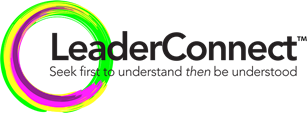Time Management - Drive to Verify
We all have time – the same amount of time – it’s how we use it that counts. Being Driven to Improvise (nothing’s impossible) and resistant Complete, I’m not Driven naturally to time management. My knowledge of this vulnerability, however, enables me to recognise the need to find ways to manage my time better – knowing that I can’t ‘fix’ my avoid Drive and become a Completer! For all Drives there are strategies we can adopt to increase our performance, reduce anxiety and be more “In Stride”.
For an overall view on time management Stephen Covey’s “First Things First” provides a simple framework for time management based on a quadrant prioritising workload (attributed to Dwight D. Eisenhower).
For a more personalised ID approach to time management there are good strategies to work with dependent upon your dominant Drive. Here we look at the Drive to Verify.
- Identify the goal of the task. In particular, this means defining the customers / users / recipient’s expectations and those working to meet those expectations – not your own. Many people driven to ↑Verify go overboard on tasks because they are working according to their own standards and expectations. For example, your definition of excellence, professionalism, customer service, fairness etc. Where possible, ask the recipient/customer to define their goal/expectations for you.
- By being aware of the goal, you will also avoid being easily distracted on tangents associated with the task. Your thirst for developing your expertise makes you vulnerable to spending more time studying and thinking about not only the relevant topics but those indirectly associated with it.
Ask yourself:
- What am I really trying to achieve here?
- What is the goal?
- What is the actual purpose?
- When communicating with others, define your goal up front with them and then speak to that. This is an alternative approach to outlining all your deliberations and thought processes first, prior to discussing the conclusion or outcome. In many situations, other people don’t want to know all the detail, they just want the outcome and the opportunity to ask you their questions.
- By being clear about the goal up front, you will also be able to significantly reduce your vulnerability to wasting time on continuous refinements beyond the customers needs or expectations. Your natural instinct is to always see “wrongs” before the rights and every time you review a document (for example) you will always see a way to improve it (layout, grammar, colour, new ideas, etc). When is enough enough? The answer is “when the goal is achieved!”.
- Watch out for “over-checking” leading to “paralysis by analysis”.
- You naturally prioritise and rank tasks according to their importance, but make sure you use an objective definition of “importance” and not your own emotional or subjective definition. For example, cleaning up your office may be a high priority to you because it will make you feel more “organised” and on top of things, but may be a relatively low priority in the overall scheme of things; i.e cleaning up is “important but not urgent”.
Be aware too, that you often spend time reviewing things (which you think is for a valuable, learning purpose) when in reality, you already know the answer, and were just looking for verification!
Next time we’ll deal with the Drive to Authenticate.
If you would like to discuss this or other ID and Connection Matters call or text me on 0417 952 183 or email mike@leaderconnect.com.au.
“Be yourself – everyone else is taken”
Oscar Wilde



